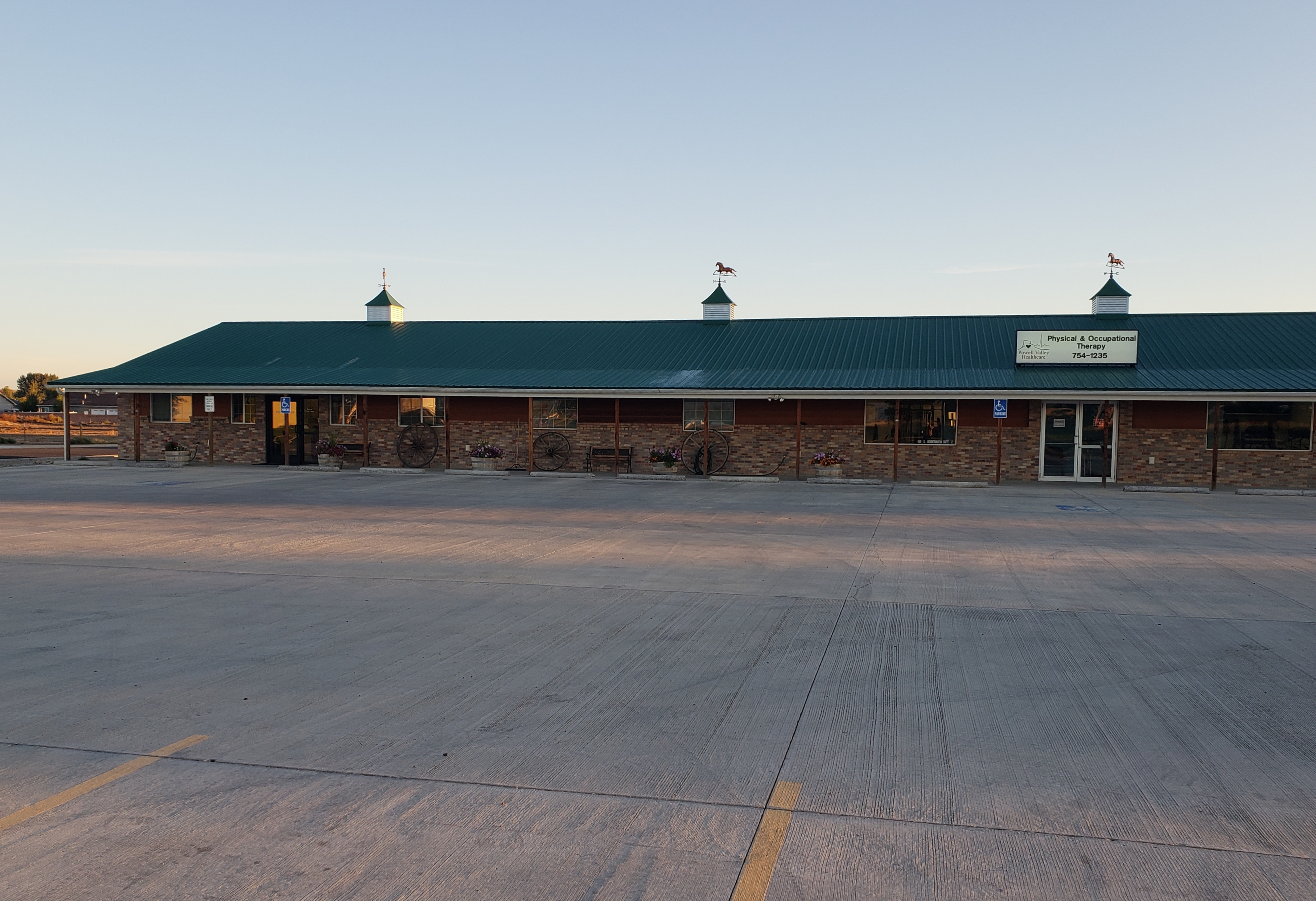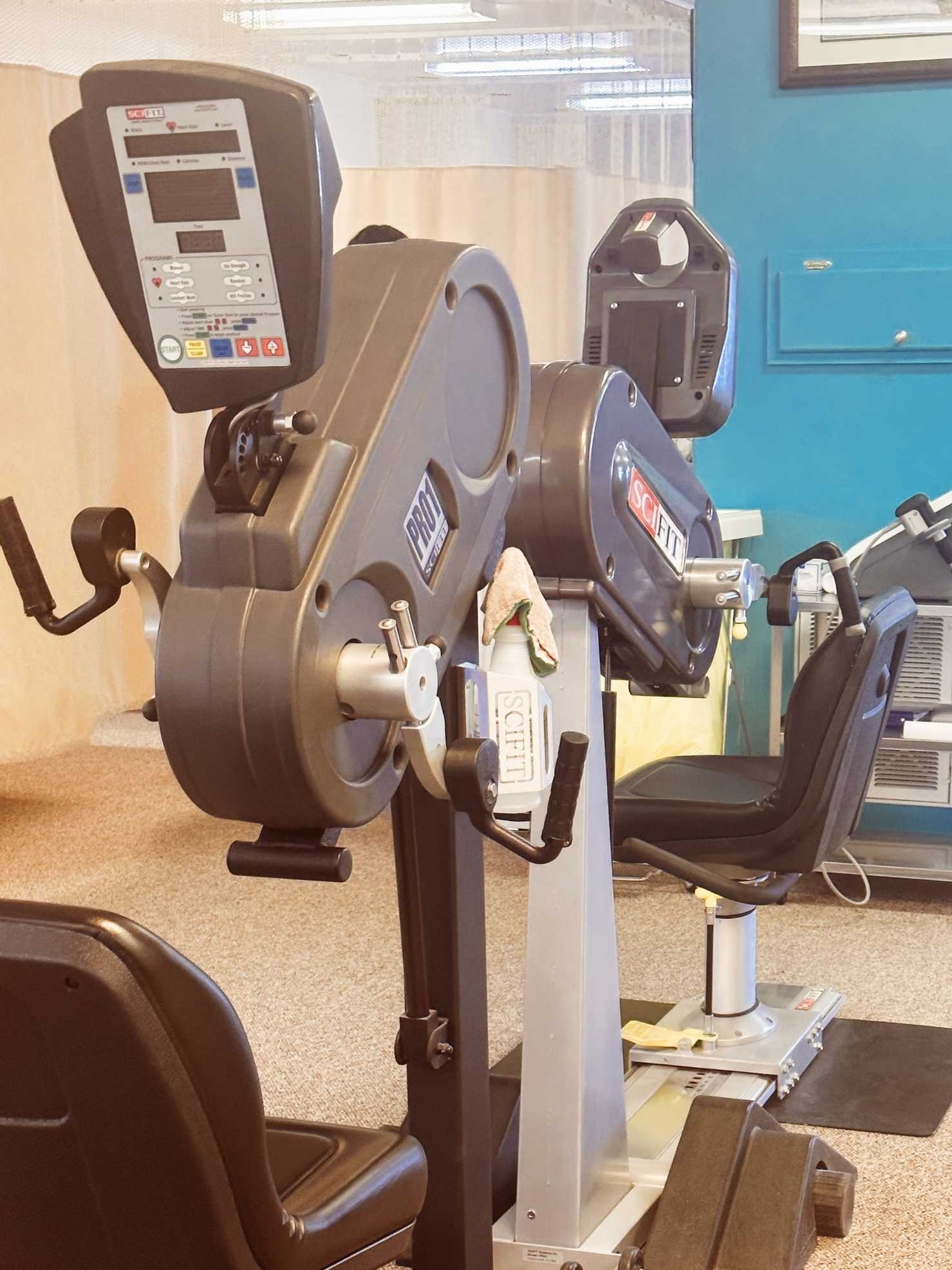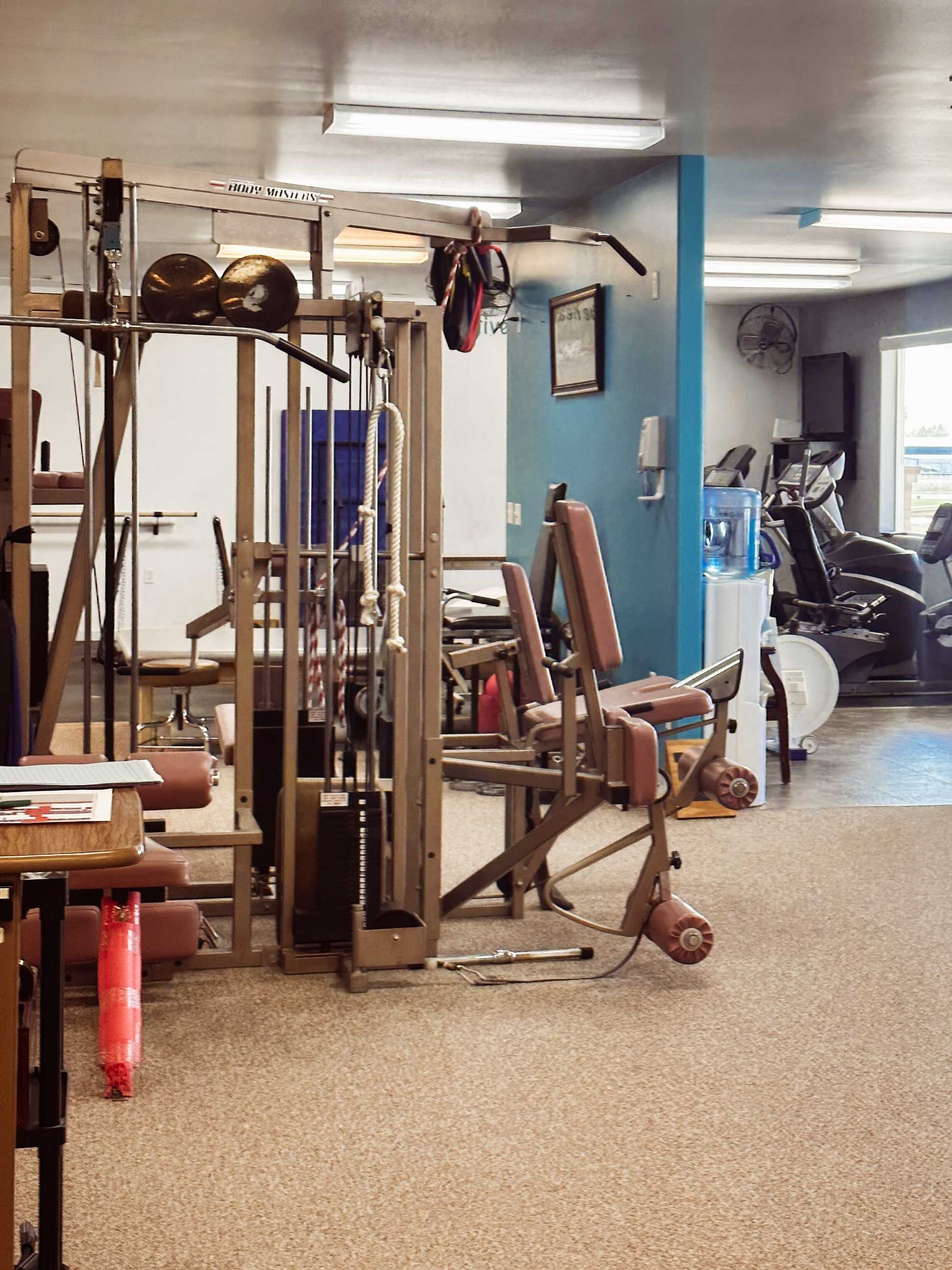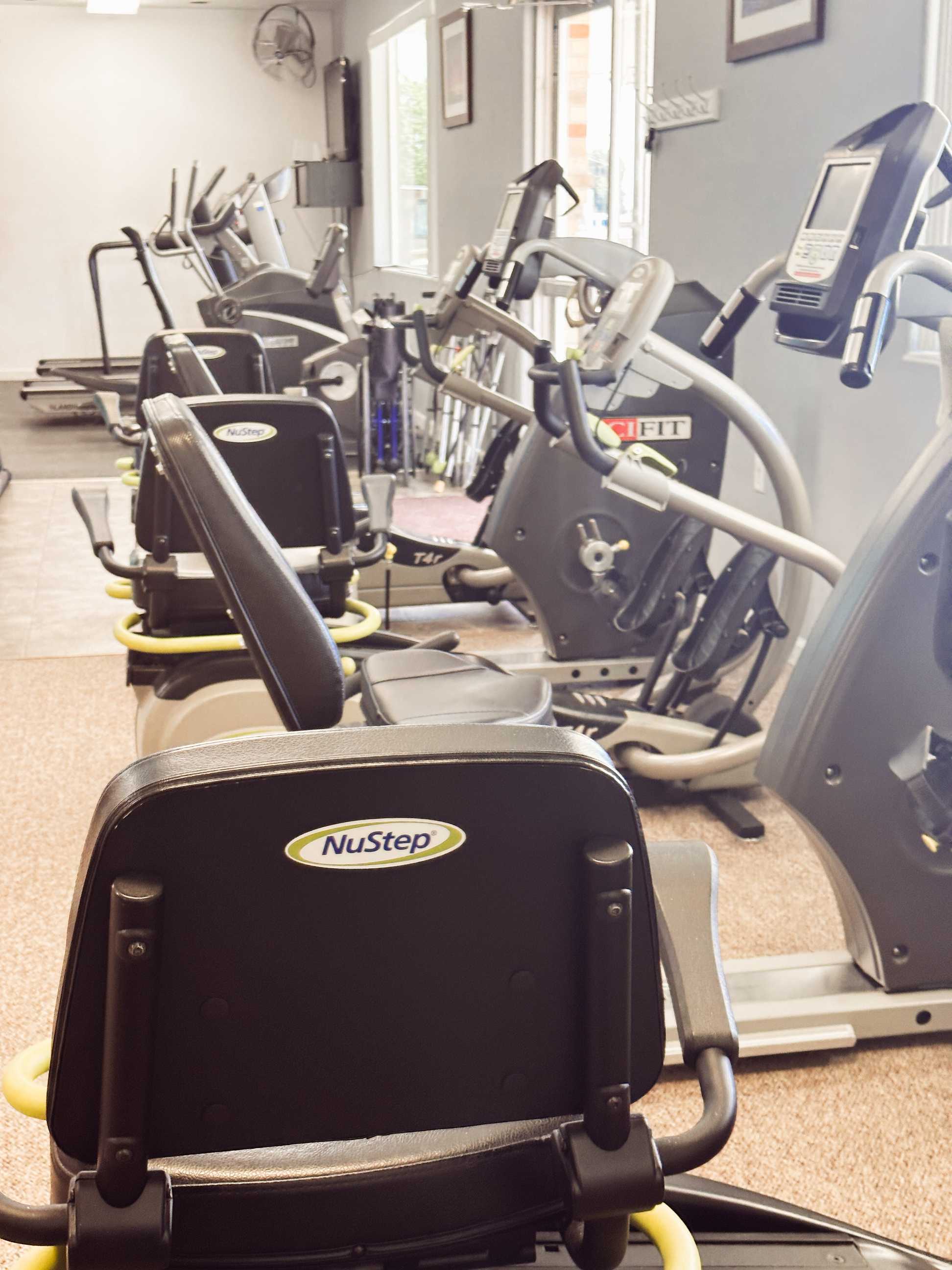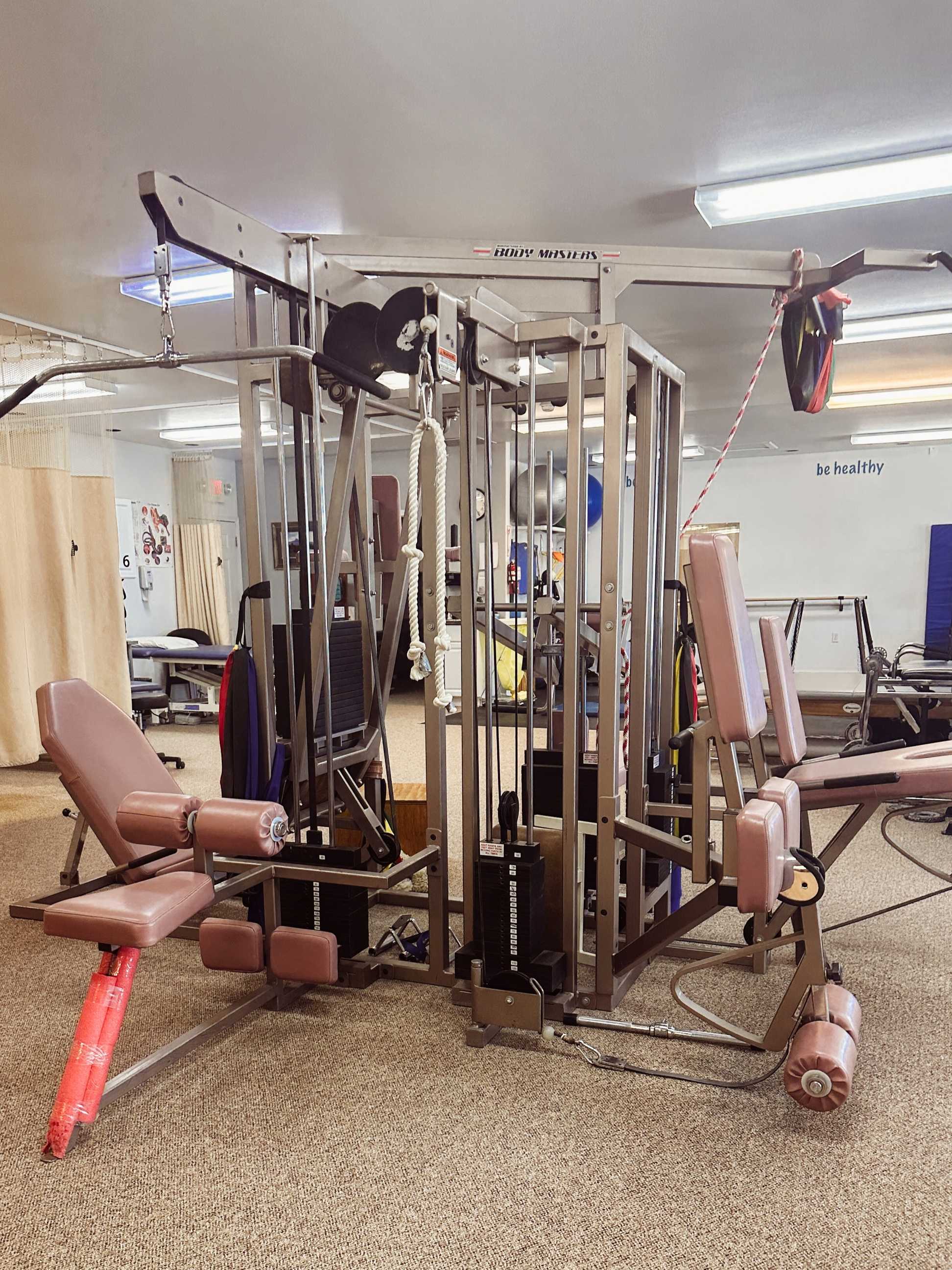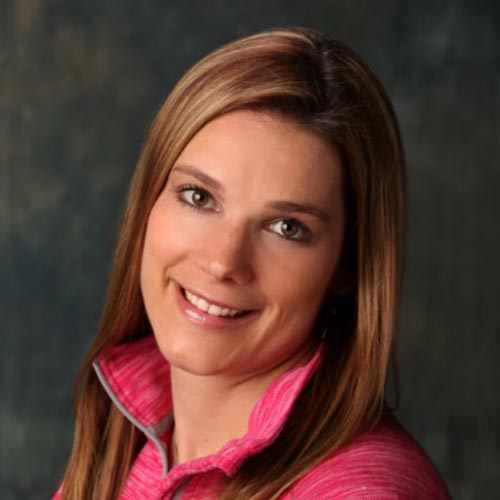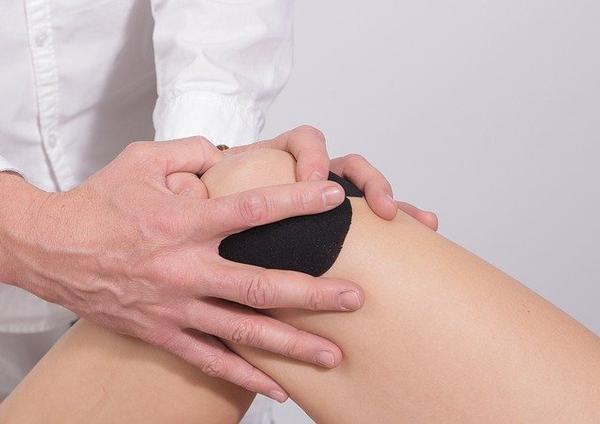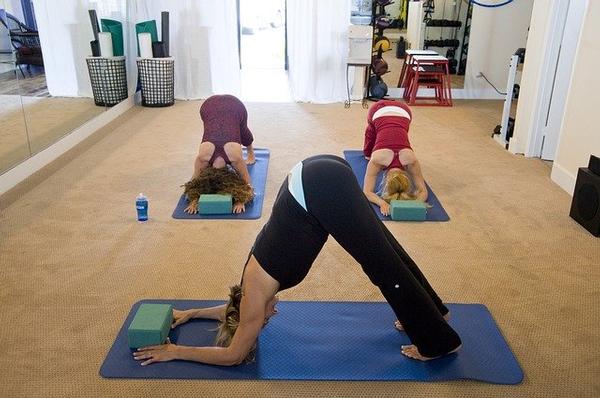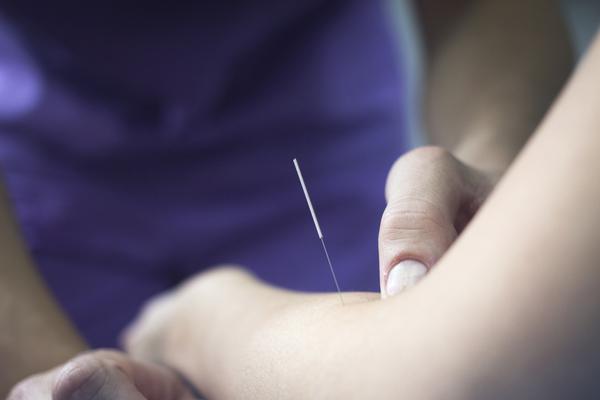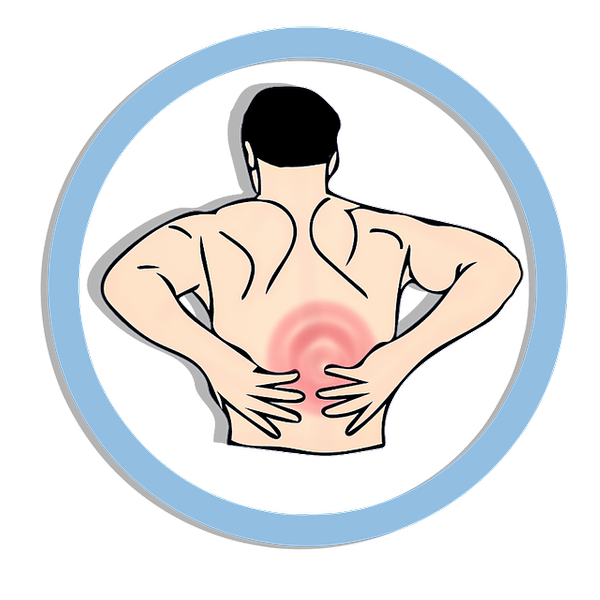North Platte Physical Therapy - Powell
Physical and Occupational Therapy are offered through Powell Valley Healthcare. These therapeutic services provided by our friendly staff include treatment to all age groups from infants to geriatric patients. We help restore the range-of-motion, strength, coordination and functional mobility that allows our patients to improve the quality of their lives through our experience and state of the art equipment. Our goal is to provide instruction and appropriate exercise programs that will allow people to return to the activities they enjoy. We offer same day scheduling to all patients and work to fit their busy life schedules.
Location Details
Address: 469 Mountain View Street, Powell, WY 82435
Hours: Mon - Fri: 8AM - 5PM
Fax: 307-754-3792
Hours: Mon - Fri: 8AM - 5PM
Fax: 307-754-3792
Services Offered
- Balance Rehab
- Body Mechanics Training
- Chronic Pain
- Custom Foot Orthotics
- Custom Splinting
- Ergonomic & Worksite Evaluation
- Functional Capacity Evaluations
- Hand Therapy
- Kinesio taping
- Myofacial Techniques
- Parkinson's Treatment LSVT Big
- Pediatric Occupational Therapy
- Pre/Post Surgical Rehab
- Pre-Employment Screening
- Stroke Rehabilitation
- TMJ
- Torticollis
- Trigger Point Dry Needling
- Vestibular Rehabilitation
- Women's Health
- Work Hardening/Conditioning
- Worksaver Certified Work Physicals
- Wound Care
Latest News & Info
The most common causes of knee pain - and how to remedy it
January 22, 2020
Knee pain is not only uncomfortable, it can be worrisome. With so much talk about MCL and ACL tears...any little knee pain might have you wondering. It’s important to know that there could be a number of reasons you are experiencing your knee-pain, and as your Wyoming/Nebraska physical therapist we can help you on your path to recovery. Remember that if you think you might be experiencing extreme knee pain, or it’s something more than a little soreness, see your primary care physician. This is not a list of all symptoms, but a general guide to help you determine your next steps.
Tendonitis
Are you an active person? We hope the answer is yes, but while being active it’s important to take your time and be careful. Overuse can result in tendonitis - an inflammation of the tendons. It can also commonly occur during high impact sports in which you’re forcefully hitting the ground. Symptoms of tendonitis include swelling in the area of the tendon, feeling a lump in that area, and difficulty moving that tendon.
Torn cartilageÂ
Trauma to the knee, such as a hard hit or even an extreme misstep, can cause the cartilage in and around the knee to tear. Unfortunately, cartilage tears can be very serious, particularly if you are an athlete. Symptoms of a torn cartilage in the knee can include tenderness, popping sounds, swelling, and inability to put weight on that leg.
Sprained/strained ligaments
Your ligaments are as equally important to stability as your cartilage. These also can be serious, and can occur from a hard hit or other trauma to your knee and surrounding area. Because of how important ligaments are to the stability of your knee, these injuries can also be very serious. Symptoms are similar to that of torn cartilage, so if you are experiencing any of them be sure to see a doctor promptly.
This is not an exhaustive list of all causes of knee pain. If you are experiencing any of the above issues, or have additional pain concerns please reach out to your primary care physician. Everyone is truly different, and each body reacts differently to pain and stress. We can always help advise you on the proper course of action, or refer you to a local primary care physician that can help you figure out your next steps.Â
No matter what your diagnosis is, we at North Platte Physical Therapy, are here to help meet your needs. Physical therapy can be essential in healing from any knee-injury, and with proper care you can be back to your normal routine in no time. We serve the communities of Wyoming and Nebraska with 22 clinics offering a full range of physical therapy services. Contact us today for more information.
Â
Read More...
Tendonitis
Are you an active person? We hope the answer is yes, but while being active it’s important to take your time and be careful. Overuse can result in tendonitis - an inflammation of the tendons. It can also commonly occur during high impact sports in which you’re forcefully hitting the ground. Symptoms of tendonitis include swelling in the area of the tendon, feeling a lump in that area, and difficulty moving that tendon.
Torn cartilageÂ
Trauma to the knee, such as a hard hit or even an extreme misstep, can cause the cartilage in and around the knee to tear. Unfortunately, cartilage tears can be very serious, particularly if you are an athlete. Symptoms of a torn cartilage in the knee can include tenderness, popping sounds, swelling, and inability to put weight on that leg.
Sprained/strained ligaments
Your ligaments are as equally important to stability as your cartilage. These also can be serious, and can occur from a hard hit or other trauma to your knee and surrounding area. Because of how important ligaments are to the stability of your knee, these injuries can also be very serious. Symptoms are similar to that of torn cartilage, so if you are experiencing any of them be sure to see a doctor promptly.
This is not an exhaustive list of all causes of knee pain. If you are experiencing any of the above issues, or have additional pain concerns please reach out to your primary care physician. Everyone is truly different, and each body reacts differently to pain and stress. We can always help advise you on the proper course of action, or refer you to a local primary care physician that can help you figure out your next steps.Â
No matter what your diagnosis is, we at North Platte Physical Therapy, are here to help meet your needs. Physical therapy can be essential in healing from any knee-injury, and with proper care you can be back to your normal routine in no time. We serve the communities of Wyoming and Nebraska with 22 clinics offering a full range of physical therapy services. Contact us today for more information.
Â
Stay safe while working toward your New Year's Resolution
January 15, 2020
Happy New Year! With a new year comes resolutions, and for many Americans it includes hitting the gym and getting healthy. While there are several different ways you can do this, the most important thing is to stay safe and take all the precautions needed to approach it in a safe and productive way. While we certainly would love to meet you in our Wyoming/Nebraska physical therapist office...let’s try to avoid injuries! To help you stay safe, we’ve compiled our favorite five tips that are sure to help keep you on the right track.
Get Guidance
Yes, we are giving you some light guidance here. But getting a personal trainer or coach will do wonders. Not only will this help you reach your goals faster, they can help better train and prepare your body for any strenuous activity. While everyone wants to reach their goals, it is essential that one does so safely, and with as little injury as possible.Â
Warm Up
If you are getting ready to partake in any type of physical activity, you should really take time to complete a short five minute warm up. Warm up with a light walk, or even some light stretching. While it might seem as if it’s not helpful, and not helping you meet your goals, it’ll ultimately help keep yourself from getting any injuries.
NutritionÂ
You’ll never meet your goals if you aren’t fueling your body properly. While fad diets are certainly not healthy, fueling your body with fruits, vegetables and lean proteins are the quickest way to help fuel your workouts.Â
Listen to Your Body
If you feel strain on your body, be sure to relax. Muscle strains and pains are your body’s way of telling you to slow down, take a breather, and make sure that you get some much needed rest. The same applies to nutrition - if you are hungry, be sure to get some healthy foods into your body.
Cross Train
If you are hoping to reach your goals, it’s important to cross train. Cross training will keep your muscles from getting exhausted, and it’ll help keep your workouts fresh, stimulating, and impactful. If your body becomes to use one type of workout, it’s common to plateau and you can cause your muscles un-needed strain and damage.
If you start to develop an injury, be sure to reach out to your primary care physician, they can help guide you on the right treatment path. At North Platte Physical Therapy, we are here to help meet your needs. We serve the communities of Wyoming and Nebraska with 22 clinics offering a full range of physical therapy services. Contact us today for more information.
Â
Read More...
Get Guidance
Yes, we are giving you some light guidance here. But getting a personal trainer or coach will do wonders. Not only will this help you reach your goals faster, they can help better train and prepare your body for any strenuous activity. While everyone wants to reach their goals, it is essential that one does so safely, and with as little injury as possible.Â
Warm Up
If you are getting ready to partake in any type of physical activity, you should really take time to complete a short five minute warm up. Warm up with a light walk, or even some light stretching. While it might seem as if it’s not helpful, and not helping you meet your goals, it’ll ultimately help keep yourself from getting any injuries.
NutritionÂ
You’ll never meet your goals if you aren’t fueling your body properly. While fad diets are certainly not healthy, fueling your body with fruits, vegetables and lean proteins are the quickest way to help fuel your workouts.Â
Listen to Your Body
If you feel strain on your body, be sure to relax. Muscle strains and pains are your body’s way of telling you to slow down, take a breather, and make sure that you get some much needed rest. The same applies to nutrition - if you are hungry, be sure to get some healthy foods into your body.
Cross Train
If you are hoping to reach your goals, it’s important to cross train. Cross training will keep your muscles from getting exhausted, and it’ll help keep your workouts fresh, stimulating, and impactful. If your body becomes to use one type of workout, it’s common to plateau and you can cause your muscles un-needed strain and damage.
If you start to develop an injury, be sure to reach out to your primary care physician, they can help guide you on the right treatment path. At North Platte Physical Therapy, we are here to help meet your needs. We serve the communities of Wyoming and Nebraska with 22 clinics offering a full range of physical therapy services. Contact us today for more information.
Â
Starting a new running routine? Here's what you need to know.
January 8, 2020
With a new year ahead, several New Year’s Resolutions across the country include starting a new running routine. As one of the best forms of exercise, running is a great way to help meet your new fitness/health goals this year. When starting a new running routine, there are a few things you should know and watch out for! As your local Wyoming/Nebraska physical therapist, we are here to help.
Getting Started
Getting started on a running plan can be intimidating, overwhelming, and ultimately scary! But it doesn’t have to be. It’s best to establish a running plan for your first 6-8 weeks and while doing so plan your walk to run ratio. If you are just starting out, stick to a 2:1 ratio to help your body adjust to the sudden surge of physical activity. Aim for a walk/run workout for 3-4 times a week, and to help your body further adjust make sure to cross train. An elliptical workout is a great way to help your body adjust.
InjuriesÂ
Runners, particularly newbie runners or those that run often, are prone to more injuries then you’d anticipate. Make sure to keep an eye out for symptoms of the following common injuries, and see your doctor if you are experiencing any pain.
Runner’s Knee: Also known as patellofemoral pain syndrome (PFPS) affects the cartilage under the kneecap - this irritation occurs in approximately 40 percent of running injuries. If you start to experience pain surrounding the knee cap, try to take some time off from running and rest. If this pain occurs for more than a few days of rest - see a primary care physician.
Shinsplints: Ever heard of these? Shinsplits, also known as medial tibial stress syndrome, is a pain that occurs around your tibia when small tears develop in the muscles. Shinsplits occur for overuse, and are particularly common in those who just start running and working out again. Take your time, and be careful not to overdo it.
Achilles tendonitis: When your achilles tendon becomes stressed, it strains and becomes irritated. This irritation can make it difficult to walk/run, and is one of the more common injuries for runners.Â
If you start to develop an injury while practicing your new running routine, be sure to reach out to your primary care physician, they can help guide you on the right treatment path. At North Platte Physical Therapy, we are here to help meet your needs. We serve the communities of Wyoming and Nebraska with 22 clinics offering a full range of physical therapy services. Contact us today for more information.
Â
Read More...
Getting Started
Getting started on a running plan can be intimidating, overwhelming, and ultimately scary! But it doesn’t have to be. It’s best to establish a running plan for your first 6-8 weeks and while doing so plan your walk to run ratio. If you are just starting out, stick to a 2:1 ratio to help your body adjust to the sudden surge of physical activity. Aim for a walk/run workout for 3-4 times a week, and to help your body further adjust make sure to cross train. An elliptical workout is a great way to help your body adjust.
InjuriesÂ
Runners, particularly newbie runners or those that run often, are prone to more injuries then you’d anticipate. Make sure to keep an eye out for symptoms of the following common injuries, and see your doctor if you are experiencing any pain.
Runner’s Knee: Also known as patellofemoral pain syndrome (PFPS) affects the cartilage under the kneecap - this irritation occurs in approximately 40 percent of running injuries. If you start to experience pain surrounding the knee cap, try to take some time off from running and rest. If this pain occurs for more than a few days of rest - see a primary care physician.
Shinsplints: Ever heard of these? Shinsplits, also known as medial tibial stress syndrome, is a pain that occurs around your tibia when small tears develop in the muscles. Shinsplits occur for overuse, and are particularly common in those who just start running and working out again. Take your time, and be careful not to overdo it.
Achilles tendonitis: When your achilles tendon becomes stressed, it strains and becomes irritated. This irritation can make it difficult to walk/run, and is one of the more common injuries for runners.Â
If you start to develop an injury while practicing your new running routine, be sure to reach out to your primary care physician, they can help guide you on the right treatment path. At North Platte Physical Therapy, we are here to help meet your needs. We serve the communities of Wyoming and Nebraska with 22 clinics offering a full range of physical therapy services. Contact us today for more information.
Â
What You Should Know About Dry Needling from your Wyoming and Nebraska Physical Therapy team
December 18, 2019
If you have suffered an injury, in pain from an old injury, or just dealing with chronic discomfort, the suggestion for dry needling might have come up. This is a fairly new treatment that has been gaining in popularity in the past few years. Before you run to the computer to do an online search for dry needling in Wyoming or Nebraska, let’s take a look at the history of dry needling and what it might be able to do for you.
The History Dry Needling
The discovery of dry needling dates back to the 1940s when a doctor by the name of Janet Travell identified muscular trigger points and patterns on the body. She along with another doctor, David Simon, created the first generation of what is known today as dry needling.
The American Physical Therapy Association defines dry needling as a skilled intervention that uses needles to penetrate the skin to stimulate underlying trigger points for pain and movement impairment management.Â
The treatment uses small, solid needles inserted into the body. The purpose is to stimulate tissue and release tight muscles. It can also be used to help lessen pain. Dry needling is a growing trend being used by professional athletes as well as weekend warriors.
Dry Needling Versus Acupuncture
You might be asking yourself, what is the difference between dry needling and acupuncture. Because the two use needles, they might sound very similar. The truth is, although there is a commonality with both using needles, there is a big difference in both method and approach between the two.
Dry needling is used to treat the muscles after a physical examination has been conducted. Treatment is based on where the patient is feeling pain as well as other areas that the physical therapist determines after conducting an examination and assessment.
When undergoing dry needling, the physical therapist inserts needles into the body slowly. They are moved around and manipulated—gently—to get a response from the muscle and usually removed almost immediately afterward. This process might be repeated over and over again, depending on the situation.Â
Acupuncture is a technique for balancing the flow of energy. When acupuncturists insert needles into specific points of the body, they are looking to balance energy flow. In acupuncture, the needles are frequently left in the body for a specific amount of time, with the acupuncturist often leaving the patient for a while.Â
Who Performs Dry Needling?
Most states regulate dry needling so it is performed only by a physical therapist or doctor of physical therapy who has been specially trained. At Peak Physical Therapy and Wellness, a certified physical therapist will perform dry needling. A massage therapist does not perform dry needling although massage too deals with trigger points in the body.
Conditions That Can Be Treated With Dry Needling
Dry needling can relieve a variety of musculoskeletal problems. It is relaxing and therapeutic procedure that is suitable for many different conditions, such as back and neck pain, sporting injuries, and discomfort that is a result of poor posture.
If you are suffering from any of the following conditions, you might inquire about dry needling to find out whether it can help you:
For the vast majority of people, dry needling does not hurt. In fact, most people don’t even feel the needles being inserted. Although the needle is moved and manipulated in order to engage a response from the muscle, the feeling that ensues is more of an ache or cramping sensation rather than pain. Â
Side Effects of Dry Needling
It probably comes as no surprise that there can be side effects to dry needling, but these will vary depending on the individual. Some people report some needle soreness that might last for a day or so after treatment. In very few patients, there is some skin bruising at the needle sights, but this is somewhat rare and occurs in fewer than 5 percent of patients.
Just in case you are a bit sore after treatment, you might want to plan your schedule around that possibility to give yourself a few days to recover.
What to Expect During Your First Dry Needling Appointment
During your first session, our physical therapist will evaluate the areas where you are feeling pain, discomfort, or tightness. An examination will determine which muscles are tight or knotted. This is often performed by gently pressing on the areas as directed by the patient or by palpitating areas to determine if the muscle feels tight or knotted.
After locating the areas to be treated, the physical therapist will press a plastic tube containing a sterile needle against the skin, gently tapping it into place. There should be very little discomfort during this procedure; most patients barely feel anything.
As the needle is pressed deeper into the muscle tissue, there may be some discomfort. The physical therapist will then gently manipulate the needle to stimulate the muscle into twitching or cramping, loosening tight muscle fibers.
Many patients report feeling relief from pain after just one or two dry needling sessions.
If you have heard about dry needling yet you remain skeptical of its efficacy, you should consider that many professional athletes around the world are using this treatment to relieve muscle pain and disfunction. At North Platte Physical Therapy, we are always happy to answer your questions about any of our treatments, which in addition to dry needling include treatment for craniofacial and jaw pain, functional movement screening, hand therapy and splinting, injury risk assessment, and more. Contact us today to learn more!
Read More...
The History Dry Needling
The discovery of dry needling dates back to the 1940s when a doctor by the name of Janet Travell identified muscular trigger points and patterns on the body. She along with another doctor, David Simon, created the first generation of what is known today as dry needling.
The American Physical Therapy Association defines dry needling as a skilled intervention that uses needles to penetrate the skin to stimulate underlying trigger points for pain and movement impairment management.Â
The treatment uses small, solid needles inserted into the body. The purpose is to stimulate tissue and release tight muscles. It can also be used to help lessen pain. Dry needling is a growing trend being used by professional athletes as well as weekend warriors.
Dry Needling Versus Acupuncture
You might be asking yourself, what is the difference between dry needling and acupuncture. Because the two use needles, they might sound very similar. The truth is, although there is a commonality with both using needles, there is a big difference in both method and approach between the two.
Dry needling is used to treat the muscles after a physical examination has been conducted. Treatment is based on where the patient is feeling pain as well as other areas that the physical therapist determines after conducting an examination and assessment.
When undergoing dry needling, the physical therapist inserts needles into the body slowly. They are moved around and manipulated—gently—to get a response from the muscle and usually removed almost immediately afterward. This process might be repeated over and over again, depending on the situation.Â
Acupuncture is a technique for balancing the flow of energy. When acupuncturists insert needles into specific points of the body, they are looking to balance energy flow. In acupuncture, the needles are frequently left in the body for a specific amount of time, with the acupuncturist often leaving the patient for a while.Â
Who Performs Dry Needling?
Most states regulate dry needling so it is performed only by a physical therapist or doctor of physical therapy who has been specially trained. At Peak Physical Therapy and Wellness, a certified physical therapist will perform dry needling. A massage therapist does not perform dry needling although massage too deals with trigger points in the body.
Conditions That Can Be Treated With Dry Needling
Dry needling can relieve a variety of musculoskeletal problems. It is relaxing and therapeutic procedure that is suitable for many different conditions, such as back and neck pain, sporting injuries, and discomfort that is a result of poor posture.
If you are suffering from any of the following conditions, you might inquire about dry needling to find out whether it can help you:
- Athletic performance
- Back pain
- Bursitis
- Chronic pain
- Golfer's elbow
- Headaches
- IT band syndrome
- Knee pain
- Neck
- Osteoarthritis
- Piriformis syndrome
- Plantar fasciitis
- Sciatica
- Tendonitis
- Tennis elbow
For the vast majority of people, dry needling does not hurt. In fact, most people don’t even feel the needles being inserted. Although the needle is moved and manipulated in order to engage a response from the muscle, the feeling that ensues is more of an ache or cramping sensation rather than pain. Â
Side Effects of Dry Needling
It probably comes as no surprise that there can be side effects to dry needling, but these will vary depending on the individual. Some people report some needle soreness that might last for a day or so after treatment. In very few patients, there is some skin bruising at the needle sights, but this is somewhat rare and occurs in fewer than 5 percent of patients.
Just in case you are a bit sore after treatment, you might want to plan your schedule around that possibility to give yourself a few days to recover.
What to Expect During Your First Dry Needling Appointment
During your first session, our physical therapist will evaluate the areas where you are feeling pain, discomfort, or tightness. An examination will determine which muscles are tight or knotted. This is often performed by gently pressing on the areas as directed by the patient or by palpitating areas to determine if the muscle feels tight or knotted.
After locating the areas to be treated, the physical therapist will press a plastic tube containing a sterile needle against the skin, gently tapping it into place. There should be very little discomfort during this procedure; most patients barely feel anything.
As the needle is pressed deeper into the muscle tissue, there may be some discomfort. The physical therapist will then gently manipulate the needle to stimulate the muscle into twitching or cramping, loosening tight muscle fibers.
Many patients report feeling relief from pain after just one or two dry needling sessions.
If you have heard about dry needling yet you remain skeptical of its efficacy, you should consider that many professional athletes around the world are using this treatment to relieve muscle pain and disfunction. At North Platte Physical Therapy, we are always happy to answer your questions about any of our treatments, which in addition to dry needling include treatment for craniofacial and jaw pain, functional movement screening, hand therapy and splinting, injury risk assessment, and more. Contact us today to learn more!
What you need to know about back surgery, from your Wyoming/Nebraska physical therapist
December 3, 2019
Are you experiencing back pain? Have you been told you’ll need to have back surgery? Back surgery can certainly be overwhelming, and even a little scary...but it doesn’t have to be.There are some important things you should know about back surgery and if you are on the fence knowing the pros and cons of pursuing back surgery can help you make your decision. If you still have questions, reach out to your local Wyoming or Nebraska physical therapist, or your team here at North Platte.Â
What are the benefits?Â
There are quite a few benefits of back surgery - some of our favorites are below:
What are the risks?Â
There are a few risks as well, however, the benefits and potential payoffs from receiving back surgery makes it worth it. Side effects/risks are also rare, and may vary person to person:
What are the different types of back surgery?Â
If you have questions concerning an upcoming back surgery, we reco
Â
Read More...
What are the benefits?Â
There are quite a few benefits of back surgery - some of our favorites are below:
- Physical fitness
- Improved mood
- Getting back to your normal mode of operation and habit
What are the risks?Â
There are a few risks as well, however, the benefits and potential payoffs from receiving back surgery makes it worth it. Side effects/risks are also rare, and may vary person to person:
- Herniated discs
- Bleeding/infection
- Blood clots
- More serious conditions such as heart attack, stroke, and nerve damage
What are the different types of back surgery?Â
- Spinal fusion: If you are having a spinal fusion surgery, your doctor will be joining your vertebrae. This is a common type of surgery, however the surgery will limit your motion between the vertebrae. Despite this, most likely you will not experience any limit in your range of motion.Â
- Laminectomy: This is a surgery in which parts of your bone, bone spurs, or ligaments will be removed. While this will help relieve any pressure you are feeling...it can lead to a more unstable spine. Often times you might have this surgery, and then a spinal fusion to assist in stabilization.Â
- Disk replacement: This is exactly what it sounds like - a surgeon will remove a damaged disk and replace it with an artificial one. This tends to be similar to a spinal fusion, but recovery time is much shorter and this surgery will allow you to continue to move your spine.
If you have questions concerning an upcoming back surgery, we reco
Â

